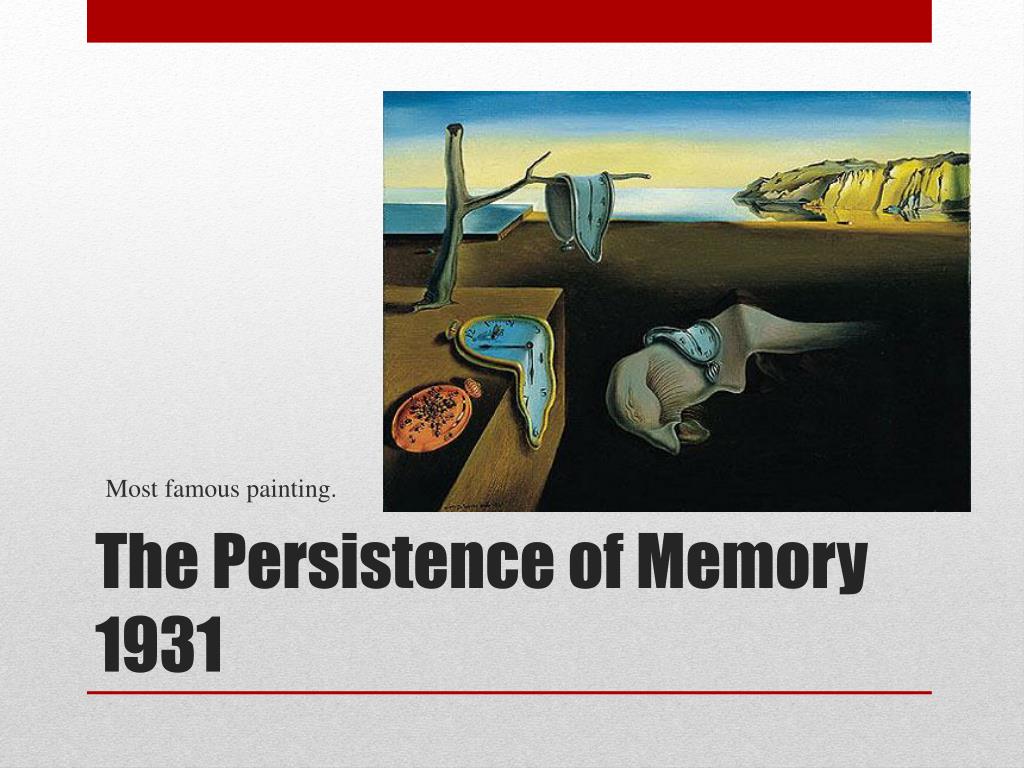

This painting like many of the Dali’s other surrealist paintings, which he referred to as “hand-painted dream photographs” has explicit, sharp details and the brushwork is almost invisible. The landscape of the painting is actually Port Lligat, a Mediterranean village that where Dali lived most of his life and often included in his paintings. Dali has visibly set the renowned melting watches in the landscape of the painting. The painting also tends to have a “jewel-like intensity” (Anfam 420). The Persistence of Memory is a small-sized oil-on-canvas painting and is not really as big as many imagine it to be. However, according to the Museum of Modern Art (MOMA), these “baffling” qualities of the painting, especially the watches, are its “highest praise.” The painting is among Dali’s works that he himself referred to as his “hand painted dream photographs.” The audience of today can read the paining as landscape, self-portraits and a self-portrait, all at the same time. Even the hardness and softness in the painting create confusion. The reason this painting has always been increasingly appealing, and has both encouraged and perplexed analysis and explanation is because Dali has effectively combined the dreamlike and the everyday, the illogical and symbolic, technology and nature.

This painting served as a means of introducing Surrealism in conventional America. The strange and foreboding shadow in the foreground of this painting is a reference to Mount Pani.Salvador Dali painted The Persistence of Memory in 1931, and today it is regarded among the 20th century’s most acclaimed and remembered paintings. Many of Dalí's paintings were inspired by the landscapes of his life in Catalonia.

The craggy rocks to the right represent a tip of Cap de Creus peninsula in north-eastern Catalonia. The Persistence of Memory employs "the exactitude of realist painting techniques" to depict imagery more likely to be found in dreams than in waking consciousness. The fly appears to be casting a human shadow as the sun hits it. Another insect that is present in the painting is a fly, which sits on the watch that is next to the orange watch. Dalí often used ants in his paintings as a symbol of decay. The orange clock at the bottom left of the painting is covered in ants. The iconography may refer to a dream that Dalí himself had experienced, and the clocks may symbolize the passing of time as one experiences it in sleep or the persistence of time in the eyes of the dreamer. One can observe that the creature has one closed eye with several eyelashes, suggesting that the creature is also in a dream state. It can be read as a "fading" creature, one that often appears in dreams where the dreamer cannot pinpoint the creature's exact form and composition. The creature seems to be based on a figure from the Paradise section of Hieronymus Bosch's The Garden of Earthly Delights, which Dalí had studied. It is possible to recognize a human figure in the middle of the composition, in the strange "monster" (with much texture near its face, and much contrast and tone in the picture) that Dalí used in several contemporary pieces to represent himself – the abstract form becoming something of a self-portrait, reappearing frequently in his work. Video icon Smarthistory - Dali's The Persistence of Memory

Asked by Ilya Prigogine whether this was in fact the case, Dalí replied that the soft watches were not inspired by the theory of relativity, but by the surrealist perception of a Camembert melting in the sun. This interpretation suggests that Dalí was incorporating an understanding of the world introduced by Albert Einstein's theory of special relativity. As Dawn Adès wrote, "The soft watches are an unconscious symbol of the relativity of space and time, a Surrealist meditation on the collapse of our notions of a fixed cosmic order". It epitomizes Dalí's theory of "softness" and "hardness", which was central to his thinking at the time. Answer:The well-known surrealist piece introduced the image of the soft melting pocket watch.


 0 kommentar(er)
0 kommentar(er)
